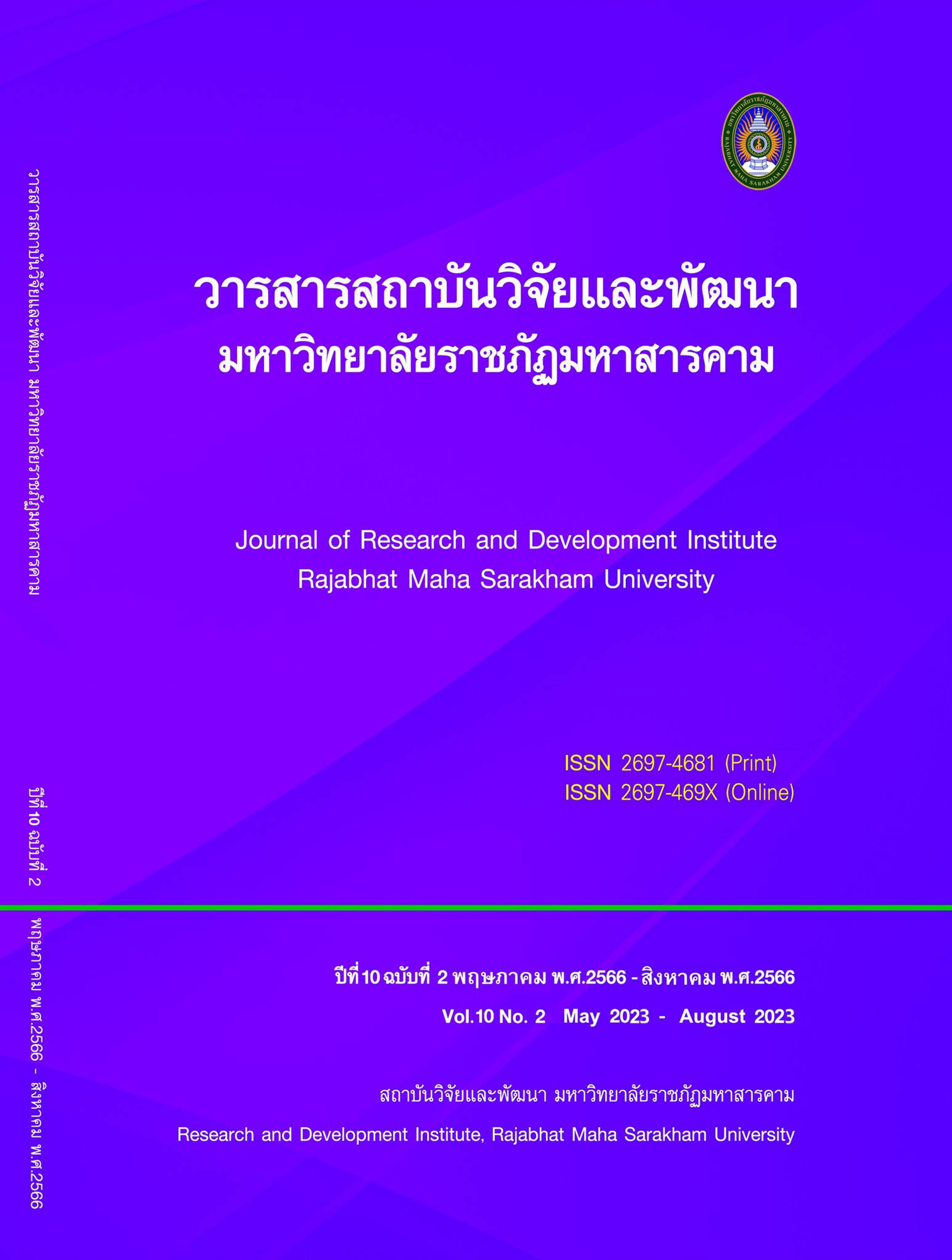Marketing Risk Management of Automobile Business
Keywords:
Risk, Risk management, Marketing, Automobile businessAbstract
This research aims to 1) describe the context of marketing risk management of automobile business, 2) identify problems in marketing risk management of automobile business, and 3) propose guidelines for marketing risk management of automobile business. The researcher conducted a study in Kanchanaburi Province. The research respondents in this study were executives in the automobile business in Kanchanaburi province, the Managing Director, and the Administrative Manager. The data were collected by 15 marketing managers and operators using the interviews method, including Semi-Structured Interviews, Observation for both participants and non-participants, and collecting data from Documentary Research through Thematic analysis.
The research results revealed that; 1) According to the marketing risk management in the automobile business, the organization has a risk management policy that is flexible manner. It is gradual management through the formulation of strategies following the situation that arises. Also, there is no specific agency responsible for the risks that respond to the situational supervision from senior management and follow up on overall organizational performance under the supervision of the headquarters intermittently. The goal is to emphasize and optimize the smooth operation and enhance the company to continue operating business effectively. 2) Risk management problems in economics found that economic volatility affected the market risks of the automobile business. The advancement of automobile technology affects the management of marketing risks in the automobile business because customers are still resistant to new technology. There was no risk management problem in terms of risk management strategies. In terms of shared values in risk management, the organizations did not create shared values in risk management. At the same time, written communication resulted in incompleteness in the content communicated during the transmission of information. 3) Guidelines for developing economic risk management include launching new products that respond to customer lifestyles at affordable prices and collaborating with financial institutions to create a pleasing customer experience. In termtechnology, the business might be building an electric vehicle rental business model to enhance familiarity and reduce concerns while expanding the charging station to cover customer demand. The aspect of shared values is the creation of shared values in the organization as a guideline for standard practices and requirements. Moreover, communication improvement included applying technology to leverage communication efficiency within the organization.
References
Baker, S., Ponniah, D., & Smith, S. (1999. “Survey of risk management in major U.K. companies”. Journal of Professional Issues in Engineering Education and Practice. 125(3) : 94–102.
Gray, C. F. & E. W. Larson. (2006). Project Management. Singapore: McGraw-Hill Companies, Inc.
Jirawatwong, K. (2019). “Risk management according to ISO 31000”. For Quality. 15(136) : 116-121.
Khamsuk, W. (2018). Factors Affecting Risks in Supply Chains of the Thai Automotive Industry. Business Review Journal. 10(2) : 123-141.
Komutsirikun, S. (2021. “The vision of PEA and the future of electric cars”. MCU Haripunchai Review. 4(2) : 71-85.
Kosiyachinda, S. (1998). Risk Assessment of Computer Projects. Bangkok : Xpernet.
Maneenak, J. et al. (2005). Enterprise Risk Management from Principle to Practice. Bangkok : Final Printing Co., Ltd.
Ngamsuwanchai, K. (2015). “Improving communication skills of employees in cross-border logistics service providers to increase operational efficiency ”. UMT Poly Journal. 18(2) : 14-26.
Phromsri, C. (2007). Risk Management. Bangkok : Offset Creation Co., Ltd.
Ratanasuwan, W. (2001). “Reducing losses through risk management”. Journal of Business Administration. 35(7) : 75.
Thipprathum, C. & Supanalai, P. (2017). “The role of human resource management in the dimension of risk management”.Journal of graduate studies Valaya Alongkorn Rajabhat University. 11(3) : 224-245.
Wilson, J. (1999). Risk Reviews and Using Risk Management Strategy.Oxford: Butterwort Heinemann.
Downloads
Published
How to Cite
Issue
Section
License
Copyright (c) 2023 ปาณัสม์กัญ เทียนฉาย, เชาวฤทธิ์ เชาว์แสงรัตน์, ฐิติมา โห้ลำยอง, สุพัตรา ยอดสุรางค์

This work is licensed under a Creative Commons Attribution-NonCommercial-NoDerivatives 4.0 International License.
Articles that are published are copyrighted by the authors of the articles







